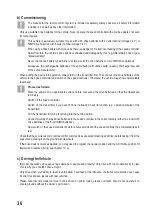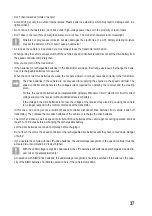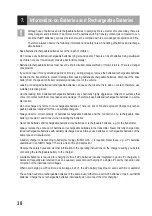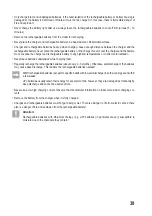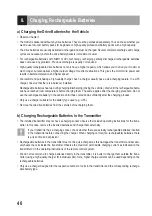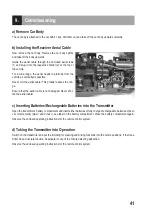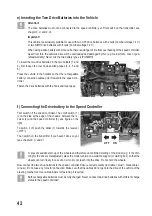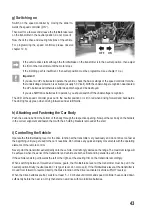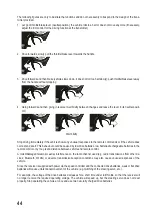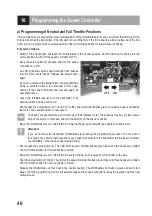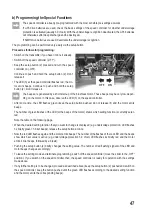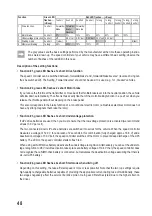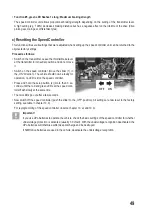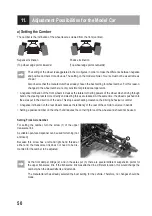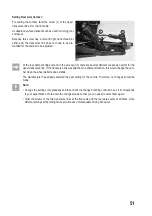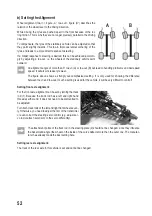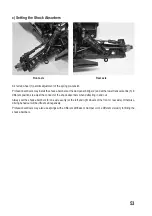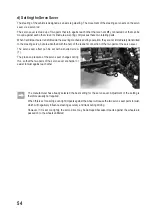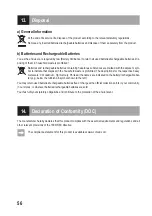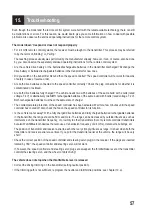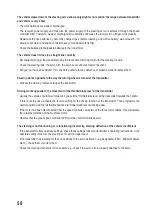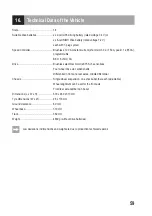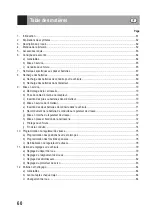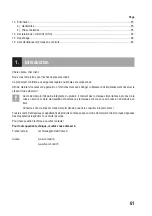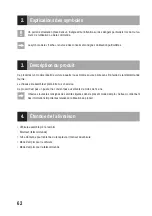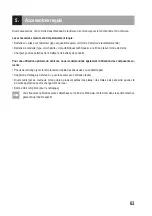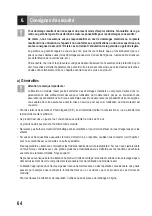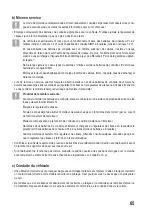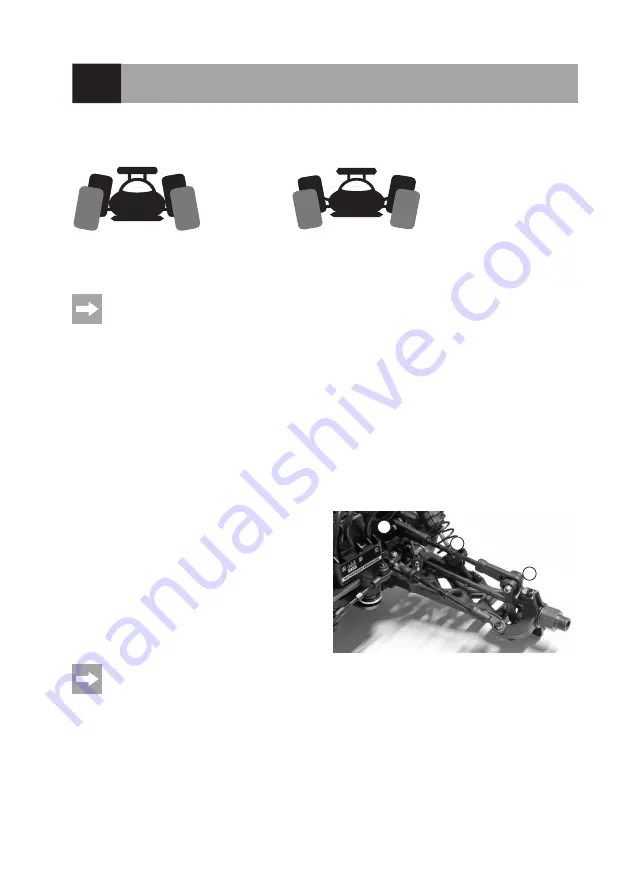
50
11. Adjustment Possibilities for the Model Car
a) Setting the Camber
The camber is the inclination of the wheel level as viewed from the front (vertical).
Negative inclination
Positive inclination
(Top wheel edge points inwards)
(Top wheel edge points outwards)
The setting of the wheel is exaggerated in the two figures in order to make the difference between negative
and positive cambers more obvious. The setting on the model vehicle of course must not be as extreme as
shown!
Also observe that the manufacturer has already chosen the best setting for wheel camber. For this reason,
changes to the wheel camber are only sensible for professional operators.
• A negative inclination of the front wheels increases the lateral cornering powers of the wheel when driving through
bends, the steering reacts more directly and steering forces are reduced. At the same time, the wheel is pushed onto
the axle spur in the direction of the axle. This stops axial bearing clearance, the driving behaviour is calmer.
• A negative inclination on the rear wheels reduces the tendency of the rear of the vehicle to swerve in bends.
• Setting a positive camber on the other hand reduces the cornering force of the wheels and should not be used.
Setting Front Axle Camber:
For setting the camber, turn the screw (1) of the upper
transverse link.
A suitable open-faced spanner can be used for turning (not
enclosed).
Because this screw has a left and right hand thread at
either end, the transverse link does not need to be dis-
mantled for the camber to be adjusted.
At the front damper bridge (2) and in the axle spur (3) there are several different suspension points for
the upper transverse link. If the transverse link was attached in a different location, this would change the
camber when the wheel deflects and extends.
The manufacturer has already selected the best setting for the vehicle. Therefore, no changes should be
made.
1
2
3
Содержание Bad Boy 1271058
Страница 118: ...118 ...
Страница 119: ...119 ...

